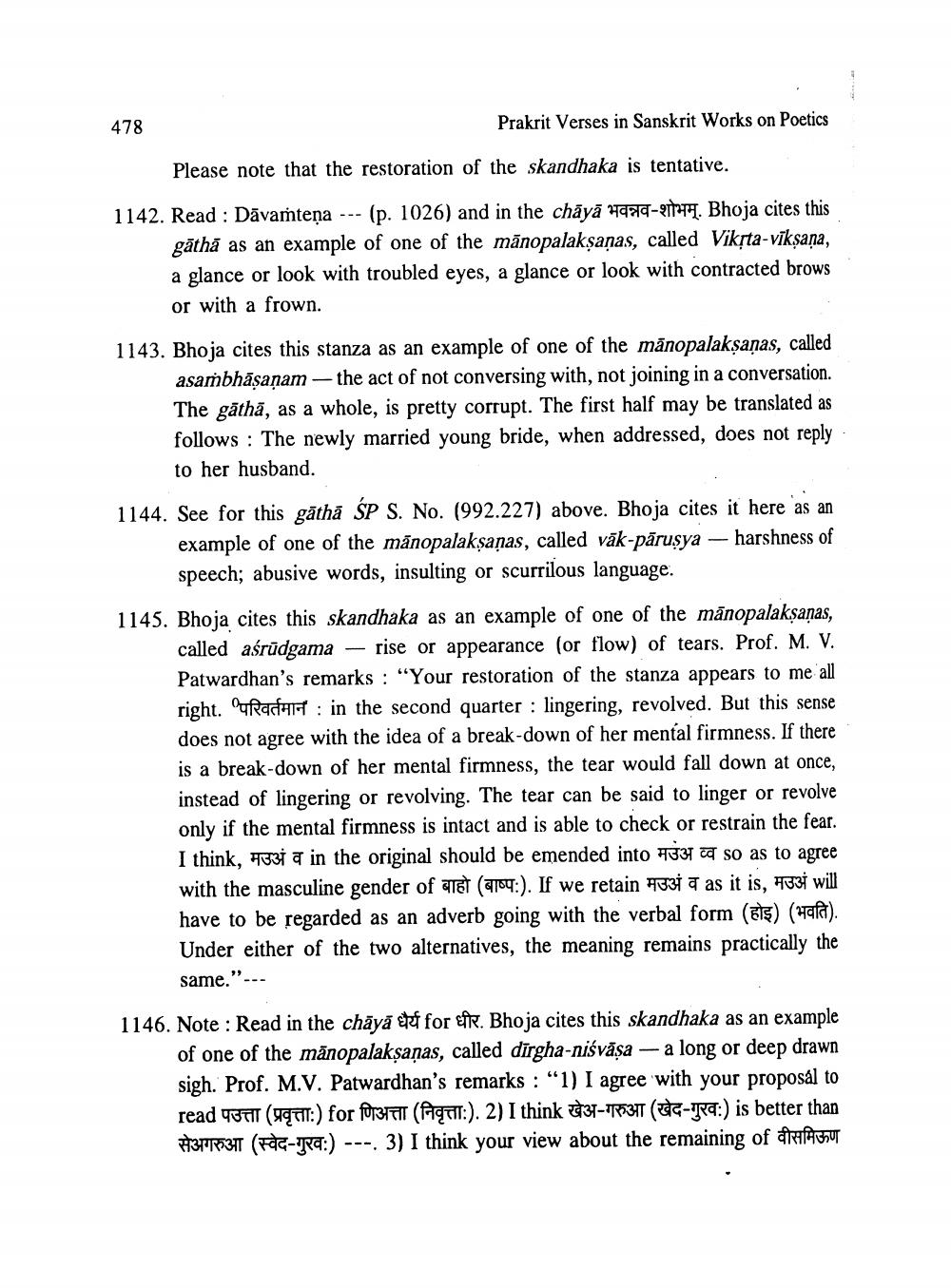________________
478
Prakrit Verses in Sanskrit Works on Poetics
Please note that the restoration of the skandhaka is tentative.
1142. Read : Dāvamteņa --- (p. 1026) and in the chāyā 1989-9114. Bhoja cites this
gātha as an example of one of the mānopalaksanas, called Vikrta-vīksana, a glance or look with troubled eyes, a glance or look with contracted brows or with a frown.
1143. Bhoja cites this stanza as an example of one of the mānopalaksanas, called
asambhāṣaṇam - the act of not conversing with, not joining in a conversation. The găthā, as a whole, is pretty corrupt. The first half may be translated as follows : The newly married young bride, when addressed, does not reply to her husband.
1144. See for this gāthā ŚP S. No. (992.227) above. Bhoja cites it here as an
example of one of the mānopalaksaņas, called vāk-pārusya - harshness of speech; abusive words, insulting or scurrilous language
1145. Bhoja cites this skandhaka as an example of one of the mānopalaksaņas,
called aśrūdgama - rise or appearance (or flow) of tears. Prof. M. V. Patwardhan's remarks : “Your restoration of the stanza appears to me all right. OuRachat : in the second quarter : lingering, revolved. But this sense does not agree with the idea of a break-down of her mental firmness. If there is a break-down of her mental firmness, the tear would fall down at once, instead of lingering or revolving. The tear can be said to linger or revolve only if the mental firmness is intact and is able to check or restrain the fear. I think, H531 a in the original should be emended into #537 ca so as to agree with the masculine gender of बाहो (बाष्प:). If we retain मउअंव as it is, मउअं will have to be regarded as an adverb going with the verbal form (as) (Hafa). Under either of the two alternatives, the meaning remains practically the same."...
1146. Note: Read in the chāyā Ett for Efr. Bhoja cites this skandhaka as an example
of one of the mānopalaksanas, called dirgha-niśvāşa - a long or deep drawn sigh. Prof. M.V. Patwardhan's remarks : “1) I agree with your proposal to read 95TIT ( TIT:) for 20131TIT (Pqtir:). 2) I think #37-931 ( -ta:) is better than
37853 (746-ra:) --- 3) I think your view about the remaining of grafissur




